Potato (आलु) is a starchy root vegetable that is commonly used in many different cuisines around the world. It is native to South America and was introduced to other parts of the world by Spanish explorers in the 16th century.
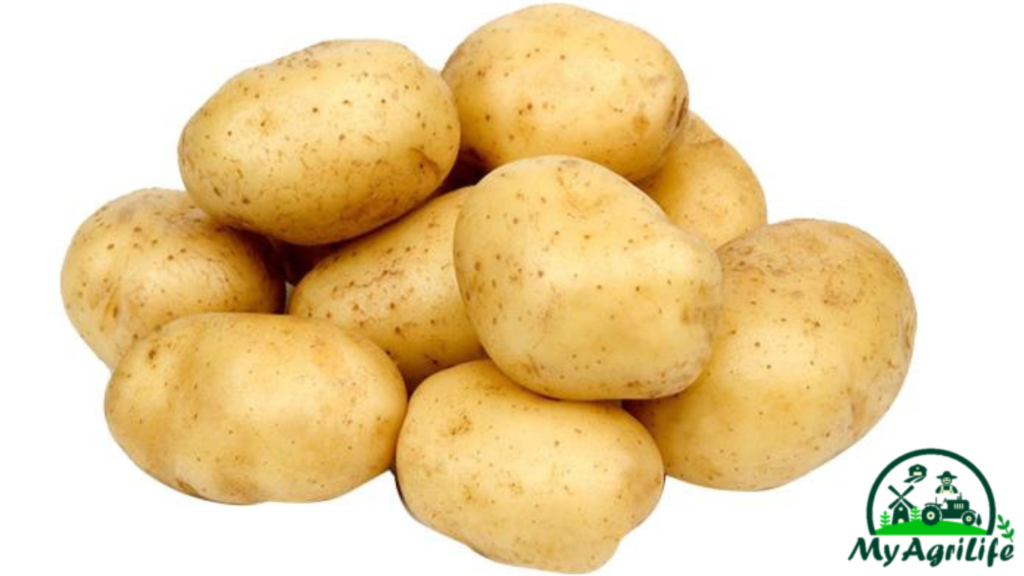
Potatoes are a good source of complex carbohydrates, dietary fiber, and many important vitamins and minerals, including vitamin C, vitamin B6, potassium, and iron. They are also relatively low in calories, with a medium-sized potato containing about 110 calories.
Potatoes can be prepared in many different ways, including boiling, baking, frying, and roasting. They are often used in dishes such as mashed potatoes, french fries, and potato salad. In some cuisines, potatoes are also used to make bread, dumplings, and other baked goods.
Potatoes are an important crop in many parts of the world, and they are grown on a large scale in countries such as China, India, and the United States. However, they are also prone to disease and pests, so farmers must take care to manage their crops carefully.
Seed Specification potato
Potato seeds are actually small pieces of potatoes that are used for planting, rather than traditional seeds. When selecting potato seeds for planting, it’s important to choose high-quality, disease-free potatoes that are suited to the climate and growing conditions in your area. Here are some specifications to consider when selecting potato seeds:

Disease resistance: Choose seed potatoes that are resistant to common potato diseases, such as late blight, blackleg, and potato virus. This will help to ensure a healthy crop and prevent the spread of disease to other plants.
Size and shape: Select seed potatoes that are uniform in size and shape, with no signs of rot or damage. Smaller potatoes can be used whole, while larger potatoes can be cut into pieces for planting.
Variety: There are many different varieties of potatoes to choose from, each with its own unique flavor, texture, and cooking properties. Consider the intended use of the potatoes (e.g. baking, boiling, or frying) when selecting a variety.

Growing conditions: Choose potato seeds that are suited to the growing conditions in your area, including soil type, temperature, and rainfall. Consult with local experts or experienced growers for recommendations.
Certification: Look for certified seed potatoes, which have been inspected and tested to ensure they are disease-free and meet quality standards. This can help to reduce the risk of crop failure and ensure a successful harvest.
Land Preparation & Soil Health potato
Land preparation and soil health are crucial factors in growing healthy and productive potato crops. Here are some important considerations for preparing the land and maintaining soil health for potato cultivation:
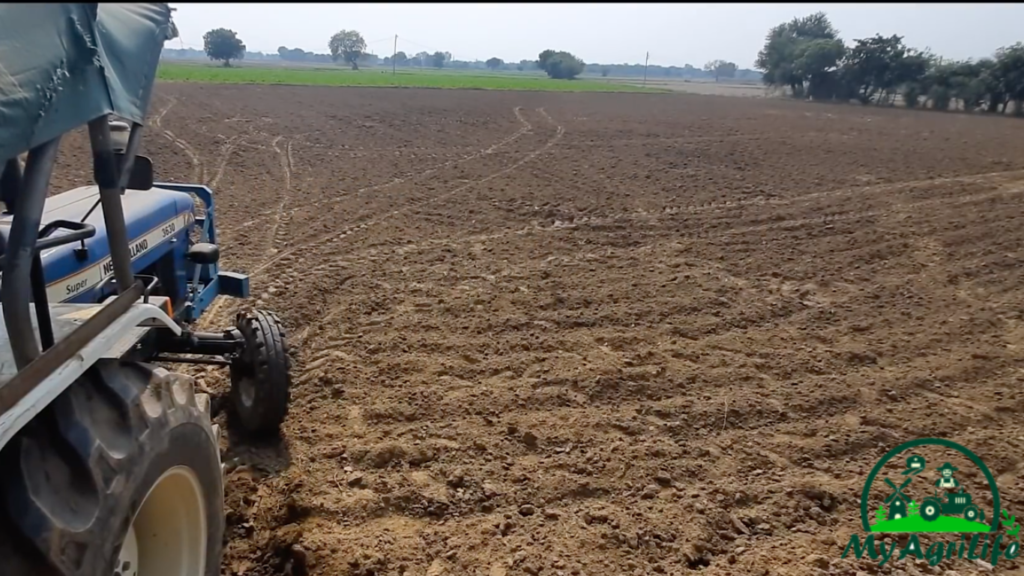
Soil testing: Before planting, it’s important to test the soil to determine its nutrient content and pH level. This can help to identify any deficiencies or imbalances that need to be addressed with fertilizer or soil amendments.
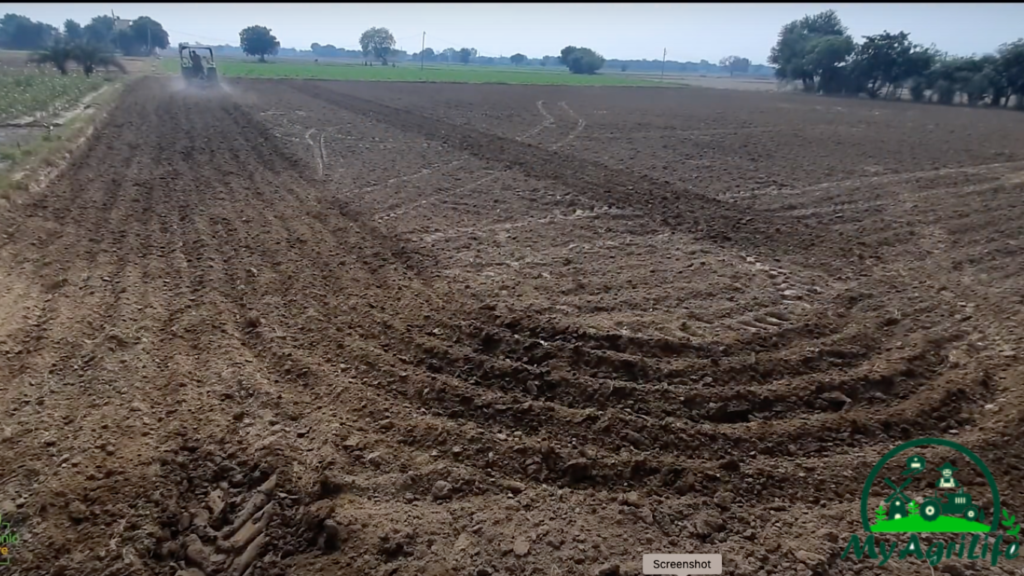
Soil fertility: Potatoes require fertile soil with adequate levels of nitrogen, phosphorus, and potassium. Adding organic matter such as compost or manure can help to improve soil fertility and structure, as well as provide a source of micronutrients.

Soil moisture: Potatoes need consistent soil moisture throughout the growing season. Proper irrigation or drainage systems should be in place to ensure that the soil stays moist but not waterlogged.
Soil pH: Potatoes prefer a slightly acidic soil pH between 5.0 and 6.5. If the soil is too alkaline, sulfur or other soil amendments may be needed to adjust the pH level.
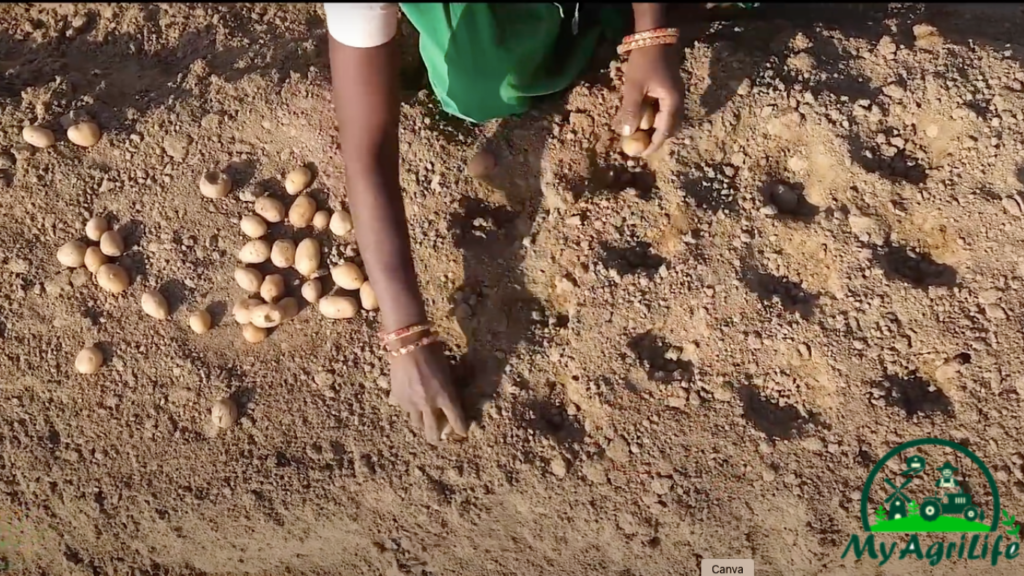
Crop rotation: Rotating potato crops with other crops such as legumes, grains, or grasses can help to prevent soil-borne diseases and pests from building up in the soil. Ideally, potatoes should not be planted in the same location more than once every three to four years.
Weed control: Weeds can compete with potatoes for nutrients and water, so effective weed control measures should be implemented. This can include cultivation, mulching, or the use of herbicides.
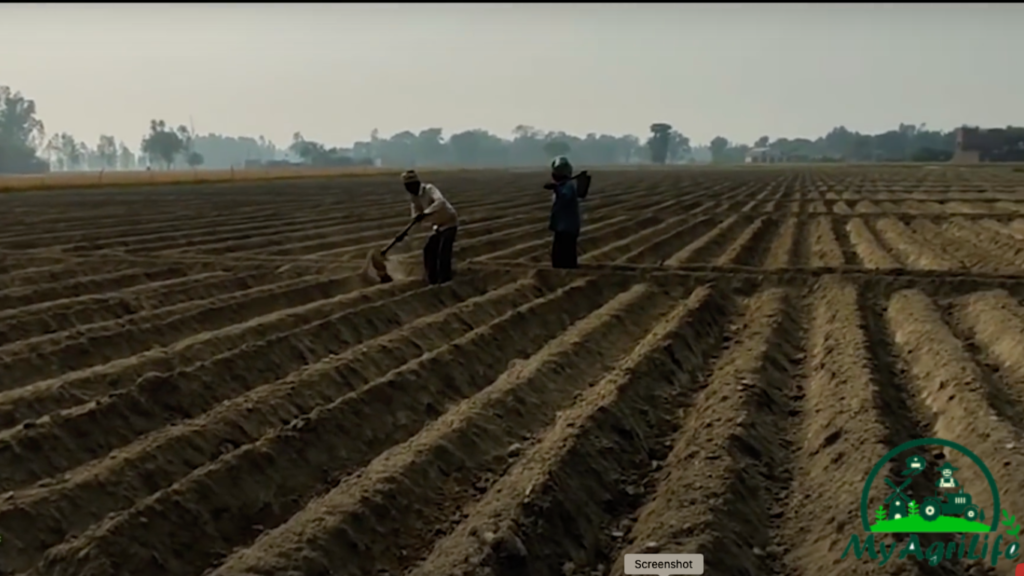
By carefully preparing the land and maintaining soil health, potato growers can help to ensure a healthy and productive crop. Regular soil testing and amendments, crop rotation, and weed control can all help to improve soil fertility and prevent disease, leading to a successful potato harvest.
Crop Spray & fertilizer Specification potato
Crop sprays and fertilizers are important tools in potato cultivation to ensure healthy growth and maximum yield. Here are some specifications to consider when selecting crop sprays and fertilizers for potato crops:
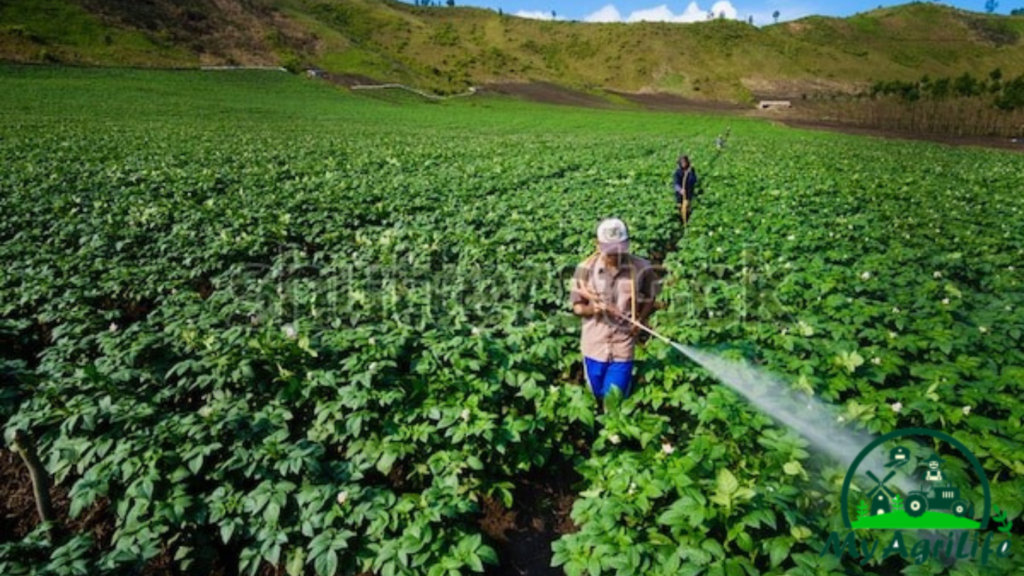
Crop sprays: When selecting crop sprays for potatoes, it’s important to choose products that are effective against common pests and diseases, while also being safe for the environment and human health. Some examples of crop sprays used in potato cultivation include fungicides, insecticides, and herbicides. Integrated Pest Management (IPM) practices that combine various methods, including biological control and cultural practices, should be used to minimize the use of synthetic pesticides and reduce the risk of resistance development.
Fertilizers: Potatoes require a balanced supply of nutrients, including nitrogen, phosphorus, and potassium. The use of organic fertilizers such as compost, manure, and cover crops can help to improve soil health and provide a slow-release source of nutrients. Synthetic fertilizers can also be used, but should be applied carefully to avoid over-fertilization and potential negative impacts on the environment. The recommended type and amount of fertilizer should be based on soil testing results and the specific requirements of the potato variety.
Application timing: The timing of crop sprays and fertilizers can have a significant impact on their effectiveness. Crop sprays should be applied at the first sign of pest or disease infestation, and should be timed to coincide with the specific stage of the pest or disease life cycle. Fertilizers should be applied before planting or during the early stages of growth to ensure that the potato plants have adequate nutrients for healthy growth and development.
Application method: The method of crop spray and fertilizer application can also impact their effectiveness. Sprays should be applied evenly and thoroughly, using proper equipment and following label instructions. Fertilizers should be incorporated into the soil to prevent runoff and maximize nutrient uptake by the plants.
By carefully selecting crop sprays and fertilizers, and applying them at the right time and in the right way, potato growers can help to ensure a healthy and productive crop. It is important to follow all safety instructions, including the use of personal protective equipment and proper disposal of unused pesticides and fertilizers, to prevent harm to humans and the environment.
Weeding & Irrigation potato
Weeding and irrigation are important aspects of potato cultivation that can have a significant impact on crop health and yield. Here are some considerations for weeding and irrigation in potato cultivation:
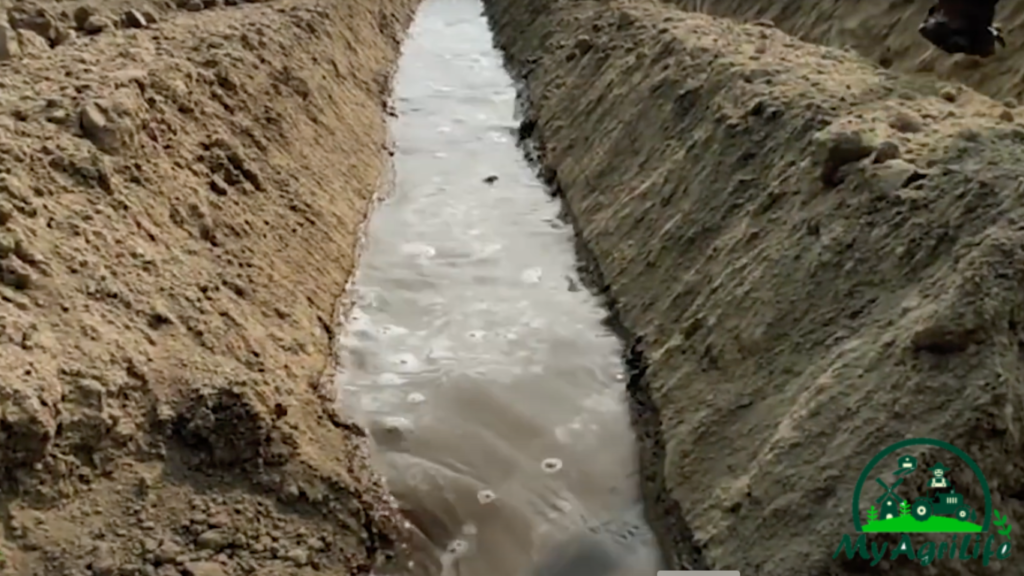
Weeding: Weeds can compete with potato plants for nutrients, water, and light, so effective weed control is essential for a healthy and productive crop. Weeding can be done manually using hand tools or mechanically using cultivators or other equipment. Mulching can also help to suppress weed growth and conserve soil moisture. It is important to weed regularly and thoroughly to prevent weeds from becoming established and causing damage to the potato plants.
Irrigation: Potatoes require consistent soil moisture throughout the growing season to ensure healthy growth and maximum yield. Irrigation should be timed to ensure that the soil stays moist but not waterlogged, as excess moisture can lead to root rot and other diseases. The amount of water needed will depend on factors such as soil type, temperature, and rainfall. Irrigation can be done using sprinklers, drip irrigation, or other methods, depending on the specific needs of the crop and the availability of water.

Soil moisture monitoring: To ensure that potatoes receive the right amount of water, it is important to monitor soil moisture levels regularly. This can be done using a soil moisture meter or by digging a small hole and checking the moisture level by hand. Irrigation should be adjusted as needed to maintain optimal soil moisture levels.
Timing: Both weeding and irrigation should be timed to coincide with the specific stage of the potato plant’s growth cycle. Weeding should be done early in the growing season to prevent weed competition and avoid damaging the potato plants. Irrigation should be done regularly throughout the growing season, with adjustments made as the potato plants mature and their water needs change.
By paying close attention to weeding and irrigation, potato growers can help to ensure a healthy and productive crop. Regular weeding, proper irrigation, and careful monitoring of soil moisture levels can all help to prevent disease and pest infestations and promote healthy growth and maximum yield.
Harvesting & Storage potato
Harvesting and storage are critical steps in potato cultivation that can impact the quality and market value of the crop. Here are some considerations for harvesting and storage in potato cultivation:

Harvest timing: The timing of potato harvest is important to ensure maximum yield and quality. Potatoes should be harvested when the plants have died back and the skin of the potato tubers has set. Harvesting too early can result in immature, small potatoes, while harvesting too late can result in potatoes that are prone to rot and disease.

Harvesting method: Potatoes can be harvested by hand using digging forks or by machine using specialized equipment. Hand harvesting allows for more careful selection of potatoes and can be more gentle on the crop, but is also more labor-intensive. Machine harvesting can be more efficient, but can result in more damage to the potatoes.

Storage: Proper storage is essential to maintain the quality and market value of the potato crop. Potatoes should be stored in a cool, dark, well-ventilated area with low humidity to prevent sprouting and decay. The ideal storage temperature for potatoes is around 7-10°C. Potatoes should not be stored near fruits or vegetables that produce ethylene gas, which can cause sprouting and spoilage.
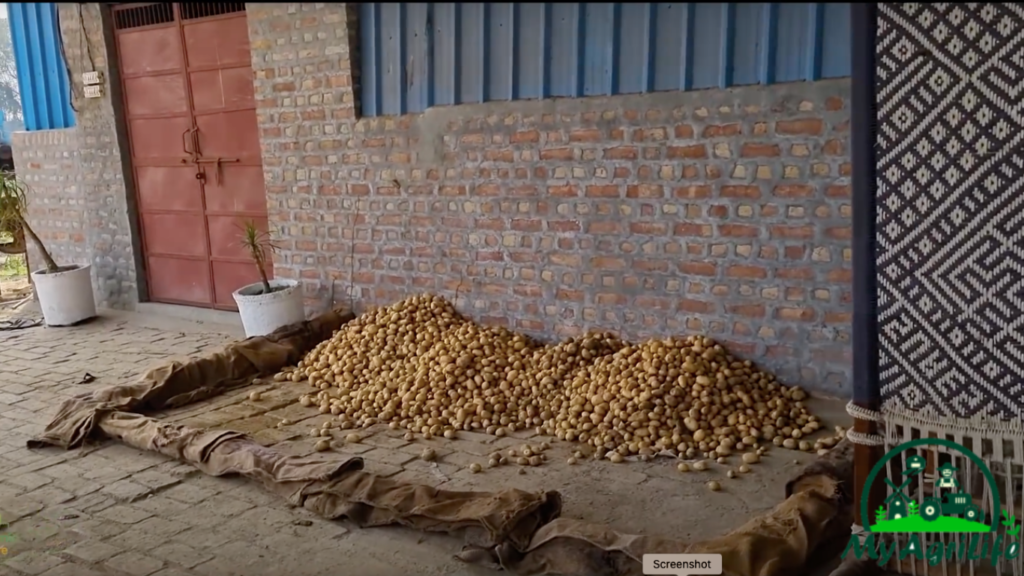
Storage containers: Potatoes can be stored in a variety of containers, including crates, bags, or bulk bins. The containers should be clean and free of debris and should allow for good airflow to prevent moisture buildup. Containers should also be sturdy enough to support the weight of the potatoes without collapsing or damaging the crop.

Monitoring: Potatoes should be monitored regularly during storage for signs of decay or sprouting. Damaged or diseased potatoes should be removed immediately to prevent the spread of rot or disease. Temperature and humidity levels should also be monitored regularly to ensure that storage conditions remain optimal.

By carefully considering harvest timing, harvesting method, storage, storage containers, and monitoring, potato growers can help to ensure a high-quality crop that commands a premium price in the market. Proper storage can also help to extend the shelf life of the potatoes, allowing them to be sold over a longer period of time.









